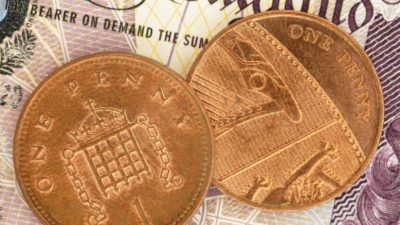The FTSE 100 (FTSEINDICES: ^FTSE) is currently trading less than 2% below its all-time high of 6,930, which it hit in 1999, at the peak of the tech boom. Does this make the index expensive — or do fifteen years’ earnings growth and inflation mean that today’s level of around 6,800 is actually pretty cheap?
 I’ve been taking a closer look at the numbers to find out — and it’s an interesting picture.
I’ve been taking a closer look at the numbers to find out — and it’s an interesting picture.
1. £10,000
Ten thousand pounds — that’s what £6,930 in 1999 would be worth today, if it had kept pace with inflation (using the Retail Price Index, or RPI).
On this basis, the FTSE 100 is more than 30% cheaper than it was in 1999. A straight buy, surely?
Well, not necessarily: it’s worth remembering just how overvalued the index was back in 1999, at the height of the tech boom. Today’s market doesn’t bear any resemblance to that giddy bubble, but it isn’t necessarily cheap.
2. 18.3
The FTSE 100 currently trades on a fairly pricey trailing P/E ratio of 18.3. City analysts are justifying this valuation with consensus forecasts for earnings growth of 12.4% over the next year, which would place the FTSE on a more reasonable P/E of 15.3.
However, earnings at FTSE 100 companies only grew by 2.8% last year, and there’s no guarantee this year will be any better.
In my view, a fair amount of growth is priced into the FTSE 100’s current valuation, and I wouldn’t be surprised if the FTSE delivers a fairly flat performance this year, as it has done for most of the last twelve months.
3. 2.7%
Although I don’t expect major growth, I’m still a buyer of the FTSE 100, thanks to the income it provides, which is more reliable than the dividends from individual stocks.
The FTSE 100 currently offers a trailing yield of 2.7% and a prospective yield of 3.1%.
Although these numbers may seem modest, it’s worth remembering that yields are even lower in the US, where the Dow Jones Industrial Average yields just 2.2%, and the S&P 500 yields 2.1%.
Is the FTSE 100 a buy?
In my view, the FTSE 100 isn’t cheap, but it remains worth buying, for income and long-term growth potential.
Even for active stock pickers, keeping a portion of your portfolio in a FTSE tracker such as the iShares FTSE 100, and automatically reinvesting the dividends, is an effective way of building long-term wealth.






